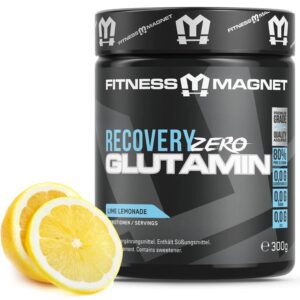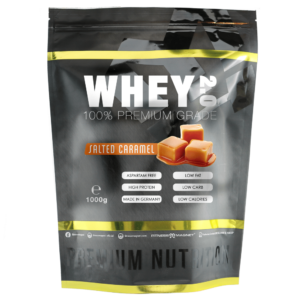Im Dunstkreis des Fitnesssports haben sich insbesondere in vergangenen Jahren unzählige Mythen und Legenden breitgemacht, die mittlerweile beinahe alle wissenschaftlich belegt oder entkräftet werden konnten. Zu diesen Mythen, bei deren Aussprache bereits so etwas wie ein wortmalerisches Schaudern zu vernehmen ist, zählt auch der Nachbrenn-Effekt, der im Englischen auch als »Afterburn Effekt« bekannt ist. Nicht zuletzt durch die Medienpräsenz und die virale Verbreitung im Netz hast du mit an Sicherheit grenzender Wahrscheinlichkeit schon einmal etwas über dieses potenzielle Wunder des Fitnesssports gehört und möchtest nun erfahren, was es damit tatsächlich auf sich hat. Ob das Ganze wirklich stichhaltig ist oder ob es sich dabei nur um einen faulen Zauber handelt, erfährst du im folgenden Artikel.
Was ist der Nachbrenn-Effekt überhaupt?
Bei all der Mystifizierung des Afterburn Effekts, an der das Internet samt seinen selbsternannten Fitness-Gurus nicht ganz unschuldig sein dürfte, müssen wir an dieser Stelle erst einmal festhalten, dass es in der Tat einen solchen Nachbrenn-Effekt gibt. Es ist allerdings anzumerken, dass es sich dabei um kein Wunderprinzip handelt, das nur auf seine Entdeckung durch irgend einen Fitness-Papst gewartet hat, sondern um einen formalen Vorgang, der in der Sportwissenschaft schon seit langer Zeit bekannt ist. Formell betrachtet handelt es sich im Detail um die Excess Post Exercide Oxygen Consumption kurz EPOC, also den Sauerstoffverbrauch nach Abschluss einer körperlichen Aktivität, anhand dessen die energetische Aktivität des Organismus beziffert werden kann.
Worauf ist der Afterburn Effekt zurückzuführen?
Seine Ursache findet dieser als Nachbrenn-Effekt bezeichnete körpereigene Mechanismus in der Tatsache, dass der Organismus eine Reihe von stoffwechseltechnischen Prozessen durchlaufen muss, um sich von der Trainingsbelastung zu erholen und in seinen angestammten Ruhe- bzw. Gleichgewichtszustand, die sogenannte Homöostase zurückzukehren. Alle diese Prozesse benötigen Sauerstoff und lassen den Stoffwechsel bis zum Erreichen der Homöostase auf einem weiterhin erhöhten Niveau arbeiten, was sich ebenfalls in einem gesteigerten Kalorienverbrauch niederschlägt. Wie hoch der tatsächliche Mehrverbrauch an Kalorien ist, hängt im Einzelfall von der Person ab. Wissenschaftlich belegt ist jedoch eine Spannweite von sechs bis fünfzehn Prozent.
Welches Workout sorgt für den größten Nachbrenneffekt?
Da wir nun zweifelsfrei geklärt haben, dass es den sogenannten Nachbrenn-Effekt nebst dem dadurch erhöhten Kalorienverbrauch tatsächlich gibt, stellt sich natürlich zwangsläufig die Frage danach, welches Workout in dieser Hinsicht am effektivsten ist. Wir wollen es kurz machen und doch gar nicht erst weiter auf die Folter spannen. Die Antwort auf dieses Frage lautet High Intensity Intervall Training, kurz HIIT. Diese speziellen und zudem hochintensiven Workouts setzen den Organismus durch den steten Wechsel an Be- und Entlastungsphasen einem sehr hohen stoffwechseltechnischen Stress aus, der deutlich höher ausfällt als bei Trainingseinheiten, die auf einem kontinuierlichen Belastungsniveau stattfinden.
Wie kann ich das HIIT-Training ausnutzen?
Wenn du den Afterburn Effekt also bestmöglich ausnutzen möchtest, solltest du High Intensity Intervall Training in jedem Fall in deinen Trainingsplan integrieren und auch im Rahmen der einzelnen Einheiten alles daran setzen, die Belastungsintensität zu maximieren. Dieses Ziel erreichst du beispielsweise dadurch, dass du während der der Belastungsphasen nicht nur an deine Leistungsgrenze gehst, sondern auch parallel die Entlastungsphasen zunehmend verkürzt. Ein weiterer Vorteil liegt ebenfalls auf der Hand, denn durch die Intensität dieser Workouts kannst du binnen 20 Minuten den gleichen Kalorienverbrauch erzielen wie in einer ganzen Stunde Cardio-Training nach dem Muster »Slow-and-steady«.
Wie lange hält der Nachbrenn-Effekt an?
Wie lange der Afterburn Effekt in der Realität anhält, ist ebenso von der Person an sich abhängig, wie der energetische Umfang des Nachbrenn-Effekts. Dementsprechend breit gestaltet sich der Spielraum, der von wenigen Stunden nach dem Training bis hin zu ganzen 24 Stunden anhalten kann. Gemäß einigen sportwissenschaftlichen Studien gibt es allerdings auch Einzelfälle, in denen die deutlich über das Normalmaß der Homöostase hinausgehende Stoffwechselaktivität sogar bis zu 48 Stunden anhalten kann. Derartige Fälle bewegen sich laut den beteiligten Wissenschaftlern aber im niedrigen einstelligen Prozentbereich.
Fazit – Nutze den Nachbrenn-Effekt weise
So viel Potenzial das High Intensity Intervall Training auch für die Ausnutzung des Afterburn Effekts in sich bergen mag, bedeutet das noch lange nicht, dass diesem keine Grenzen gesetzt wären. Folglich gilt es in erster Linie, auf den eigenen Körper zu hören und es mit dem HIIT-Training nicht zu übertreiben, da du somit leicht ins Übertraining gerätst, worunter nicht nur deine Leistungsfähigkeit, sondern im schlimmsten Fall auch deine Gesundheit leidet. Am besten ist es also, wenn du dein konventionelles Kraft- und Ausdauertraining gezielt durch zwei bis maximal drei HIIT-Einheiten pro Woche ergänzt und du somit in deiner körperlichen Entwicklung bestmöglich vom Nachbrenn-Effekt profitierst.

